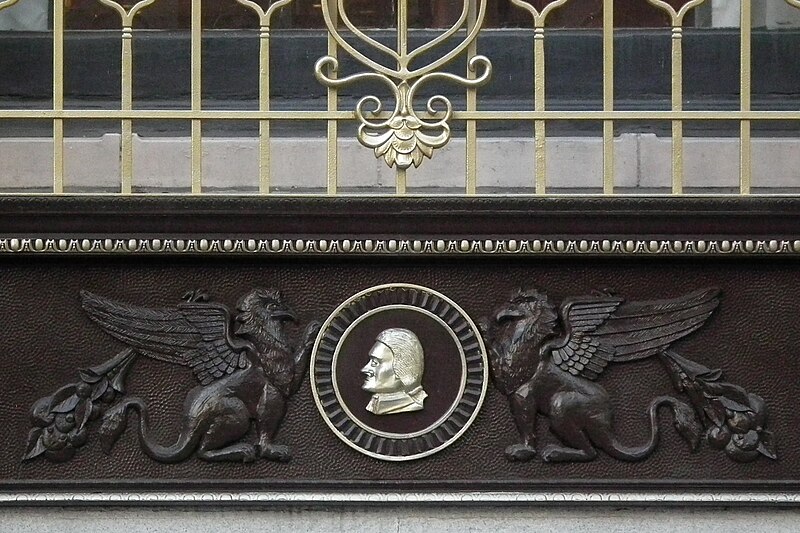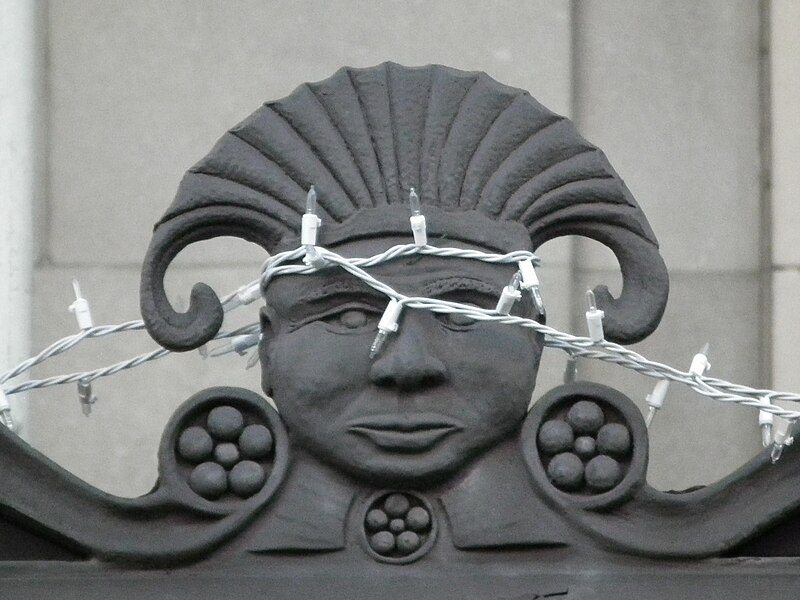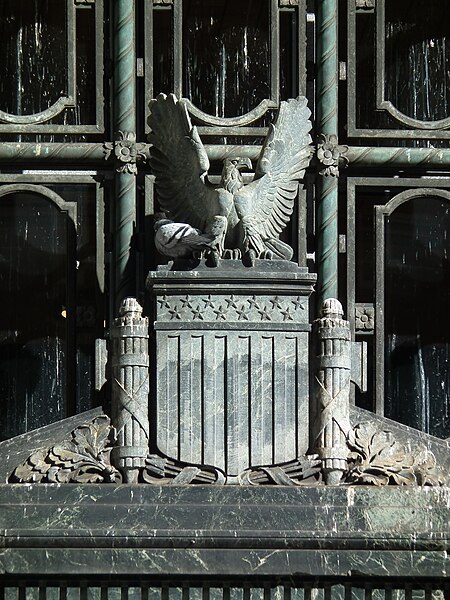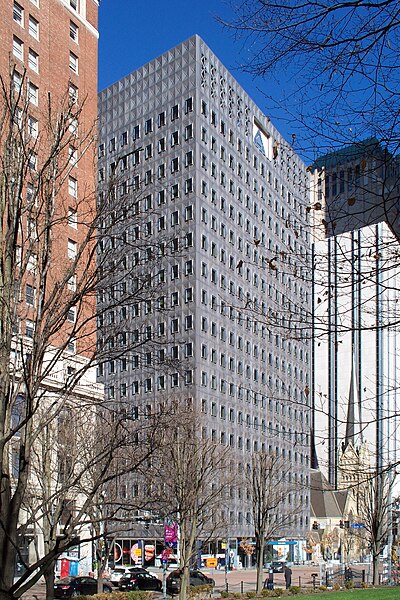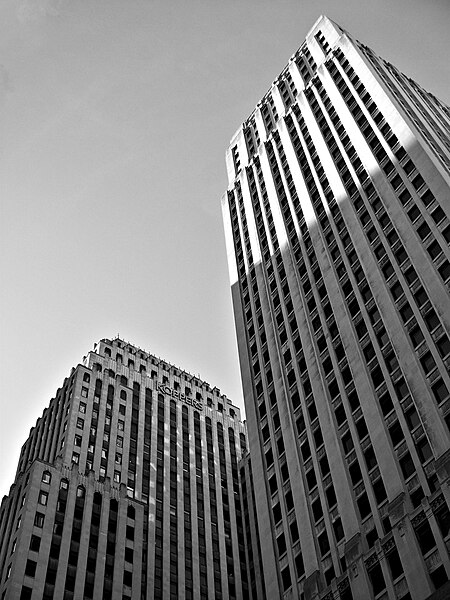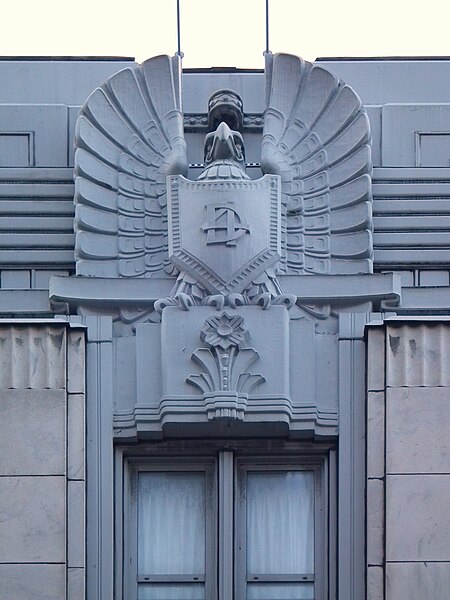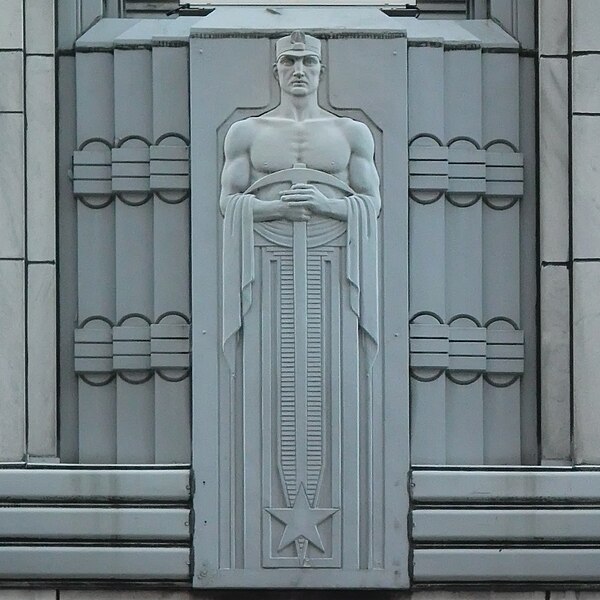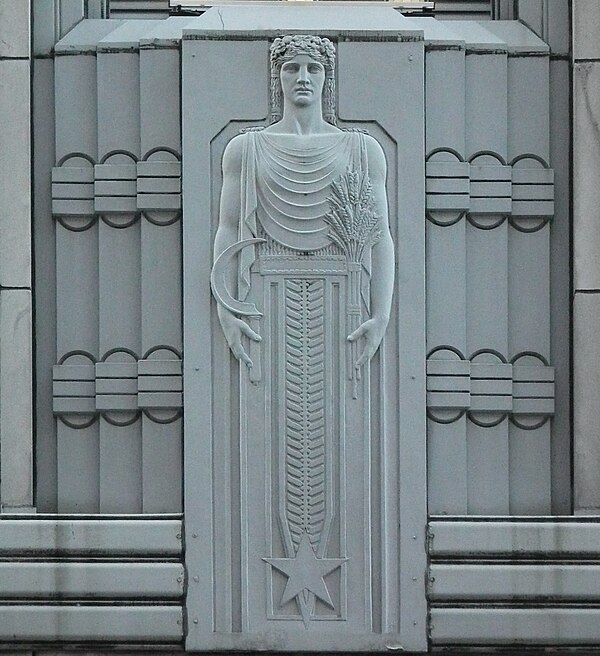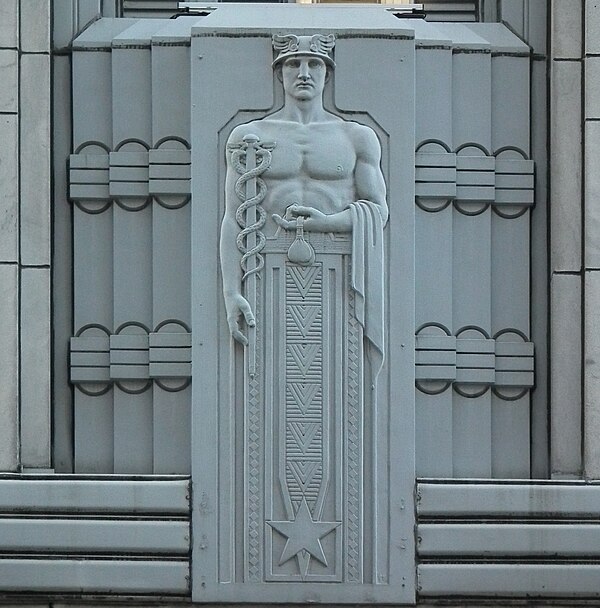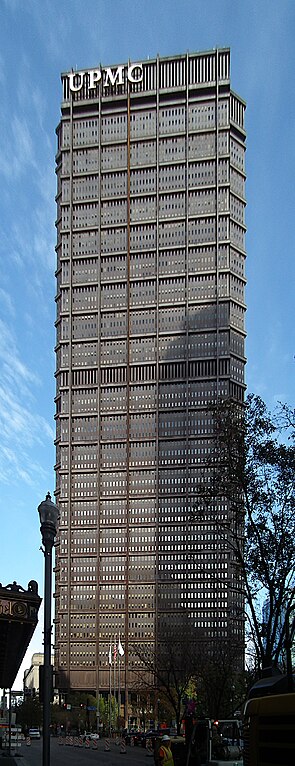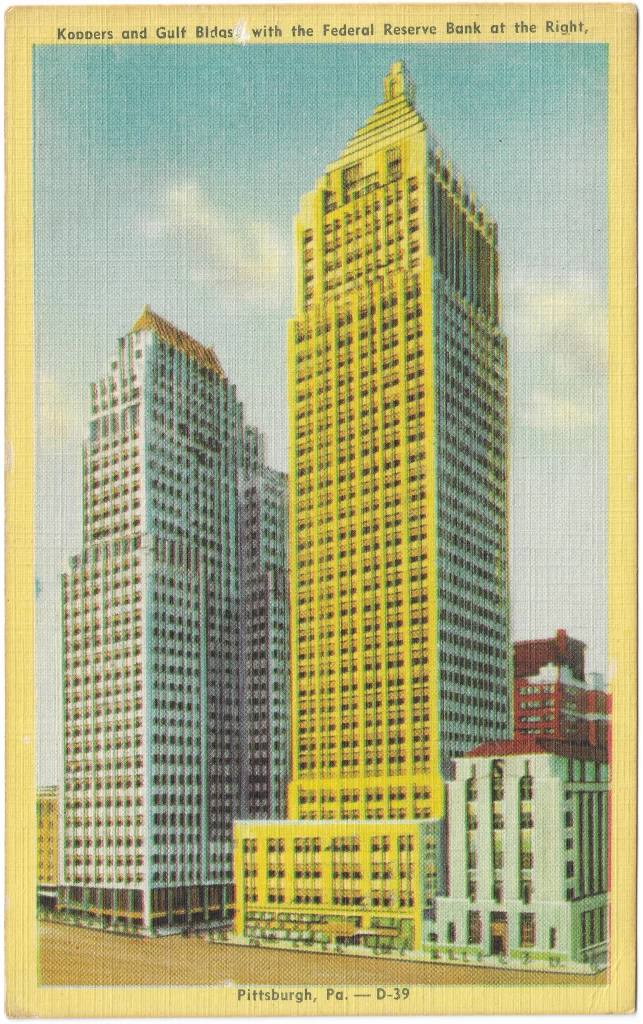
Designed by Andrew Peebles, this church, which would be the most magnificent thing in many a neighborhood, is dwarfed by the Grant Street behemoths around it. Other even grander churches on Grant Street (St. Paul’s Roman Catholic Cathedral and St. Peter’s Episcopal) were displaced by commercial interests, but this one has somehow survived since 1887, which may make it the oldest standing building on Grant Street. It’s currently getting some restoration.













